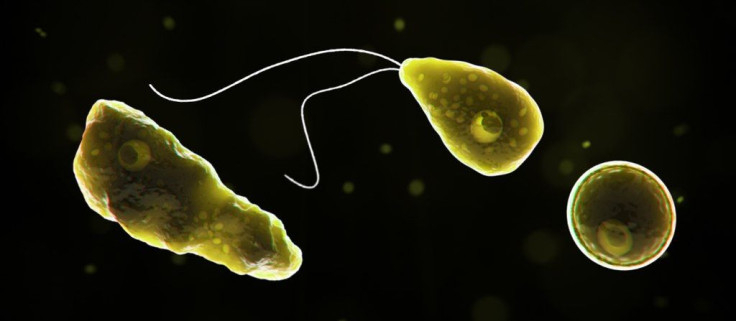'Brain-Eating' Amoeba Expanding Northward In The US: Study
KEY POINTS
- In the U.S., N. fowleri infections are typically reported from southern states
- Data from 1978 to 2018 suggests a northward shift in exposures
- Researchers say the warming temperatures may have contributed to the trend
Researchers of a new study found that a rare brain-eating amoeba may be slowly making its way northward in the U.S.
The microscopic Naegleria fowleri is a "free-living" amoeba that causes a rare but often fatal disease called primary amebic meningoencephalitis (PAM). More commonly known as "brain-eating amoeba," N. fowleri commonly occurs in warmer freshwater such as lakes, hot springs and rivers. In the U.S., for instance, the majority of N. fowleri reports come from the southern-tier states, the Centers for Disease Control and Prevention (CDC) said.
N. fowleri infections are still considered rare in in the U.S., the CDC noted. However, the researchers of a new study published in the journal Emerging Infectious Diseases found that PAM cases in the country seem to be moving in a northward trend.
Midwestern Cases
For the study, CDC researchers analyzed the trends of PAM cases related to recreational water exposures in the U.S. from 1978 to 2018. Of the reported 120 cases within that period, 85 were eligible for a suspected recreational water exposure, 69 of whom were exposed at a lake, reservoir or pond, 14 exposed at a river or stream, while the other two were exposed at an "outdoor aquatic venue."
During this period, there was an average of zero to six cases per year in the U.S., the researchers said. And while 74 of the cases did occur in Southern states, there were six cases that were reported in the Midwest, five of which happened after 2010.
What's more, the researchers also found a northward shift in case exposures of about 13.3 kilometers per year, supporting what appears to be a northward trend.
"The rise in cases in the Midwest region after 2010 and increases in maximum and median latitudes of PAM case exposures suggest a northward expansion of N. fowleri exposures associated with lakes, ponds, reservoirs, rivers, streams, and outdoor aquatic venues in the United States," the researchers said.
Warming Temperatures
The researchers' findings show that while the amount of exposures remain quite stable through the years, the areas where N. fowleri exposures are happening has expanded to the places where they were not typically observed before.
It's possible, the researchers noted, that the warming temperatures may have something to do with this trend.
"We observed an increase in air temperatures in the 2 weeks before exposures compared with 20-year historic averages," the researchers wrote. "It is possible that rising temperatures and consequent increases in recreational water use, such as swimming and water sports, could contribute to the changing epidemiology of PAM."
According to the researchers, the possible connection of N. fowleri infections with warming temperatures "warrants further investigation."
Water Safety
As mentioned, the risk of N. fowleri infections in the U.S. is still considered to be very low. However, the researchers' findings show how cases of the often-fatal infection could be appearing in places where it previously typically did not. As such, it's important to protect oneself from a possible N. fowleri infection even with simple steps.
As the CDC noted, swimming behavior that have been associated with N. fowleri infections include diving, submerging the head in water, jumping into the water and other water activities that can cause the water to go up into the nose. Since N. fowleri infects people through the nose and it's still quite difficult to control naturally occurring N. fowleri, it's important to limit the amount of water than can go into the nose when engaging in activities in warm fresh water, the CDC advised.
This includes holding the nose shut or using nose clips, keeping the head above the water, avoiding water-related activities when temperatures are quite high, and avoiding disturbances in the sediment.

© Copyright IBTimes 2025. All rights reserved.






















